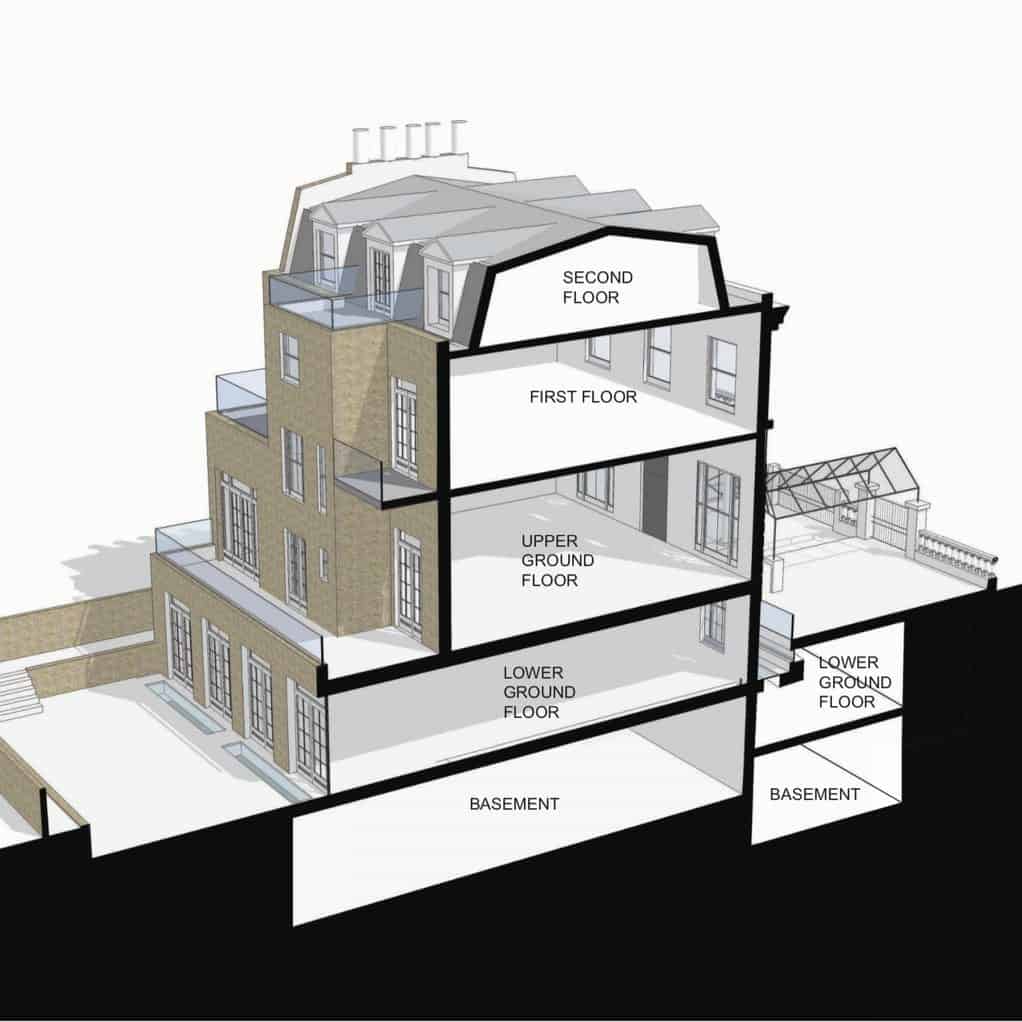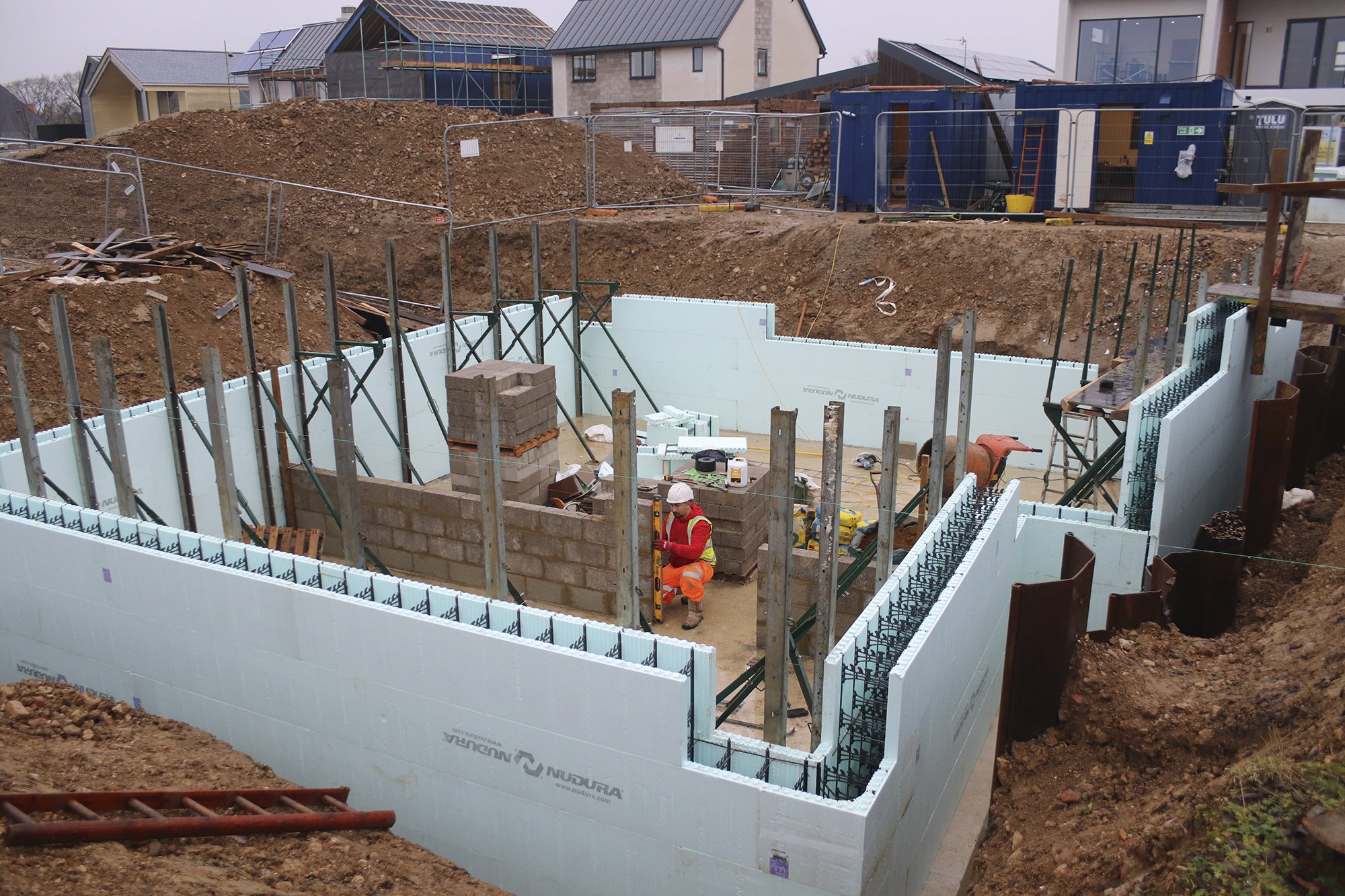Imagine this: you’re showing a potential buyer around your home, proudly describing its charming features, when they ask about the basement. You excitedly explain its spaciousness, envisioning home theater nights and family gatherings. Then, they pause, a curious look in their eyes, and ask, “Does this count as a floor?” Suddenly, your confident swagger falters. Is there truly a definitive answer to this question?

Image: dyergrimesarchitects.com
The “basement debate” has fueled countless arguments among friends, family, and even professionals. It’s a seemingly simple question, yet the answer is surprisingly complex. The classification of a basement as a “floor” depends on a fascinating interplay of factors, encompassing building code, legal definitions, and even personal opinions. This article delves into the heart of this age-old debate, providing clear explanations, historical context, and practical insights to help you navigate the world of floor-counting, once and for all.
A Deeper Dive into Basements and Floor Classification
Before diving into the intricacies of basement classification, let’s define what constitutes a “floor.” Think of it as a distinct level of a building, typically separated by a horizontal surface, whether it be a concrete slab, wood floor, or a combination of both. But with basements, things get tricky.
The Legalistic Perspective: How Codes Shape Our Understanding
Building codes, the legal guidelines governing construction practices, play a vital role in defining what constitutes a floor. The International Building Code (IBC), widely adopted throughout the United States, sets specific requirements for basements, including factors like ceiling height, window size, and access to daylight. If a basement meets these criteria, it can be considered a habitable space, which typically qualifies as a “floor.”
However, the IBC’s “habitable space” definition doesn’t automatically mean a basement automatically counts as a floor. Local regulations often supersede broader codes, adding their own set of rules and interpretations. For instance, some municipalities may require additional features like sprinkler systems or egress windows to classify a basement as a floor. It’s crucial to consult with local building authorities to ensure compliance.
The Role of Real Estate Terminology: A Matter of Market Perceptions
In the real estate world, “floors” are often used to describe individual levels of a property, with terminology tailored to market conventions. A basement might be referred to as a “lower level”, “walk-out basement”, or even a “finished basement” without necessarily being categorized as a “floor.” These terms can vary depending on the location and local practices, further blurring the lines.
The perceived value of a basement also plays a significant role in how it’s marketed. A fully finished basement with a high-quality remodel can be marketed as a “bonus room” or “family room,” subtly implying its functionality as a living space. This marketing approach often influences public perception, even if the basement doesn’t technically meet all the criteria for being a floor.

Image: www.thepropertyfiles.net
Exploring the Historical Context: Basements as “Extra Spaces”
Historically, basements were often envisioned as utilitarian spaces, used for storage, laundry, or utilities. They weren’t meant for living and were often unfinished, with low ceilings and limited natural light. This historical perspective likely factored into the common perception of basements as “extra spaces” rather than “full-fledged floors.”
However, with shifting living needs and architectural advancements, basements have undergone a dramatic evolution. Today, many basements are transformed into sophisticated living spaces, featuring high ceilings, large windows, and even fireplaces. This shift has led to a re-evaluation of how basement spaces are classified, blurring the traditional lines between functional storage and comfortable living areas.
Building Codes and Legal Requirements: Beyond the Floor Debate
The “basement floor” debate extends beyond the conceptual realm, impacting important legal considerations like property taxes and insurance coverage. In many areas, finished basements are subject to different property tax rates than unfinished ones, reflecting their increased living space value.
Similarly, insurance policies may differentiate coverage based on whether a basement is considered a habitable space. Basements used for living purposes may require additional insurance coverage or higher premiums to account for potential risks associated with flooding or other hazards.
Navigating the “Basement Floor” Terminology for Better Communication
Given the complexities around classifying basements as floors, effective communication is key. Instead of engaging in heated debates about “floor” versus “not a floor,” it’s often more productive to focus on the specific functionalities and characteristics of the space.
When describing a basement, use clear and concise language that avoids ambiguity. Terms like “finished basement,” “walk-out basement,” or “lower level” convey more precise information about the space than simply calling it a “floor.” These descriptions help establish a common understanding between parties, avoiding potential misunderstandings.
Expert Insights and Actionable Tips: Making Informed Decisions
To navigate the “basement floor” debate effectively, consider consulting with local experts. Real estate agents are well-versed in local market conventions and can provide insights into how basements are typically categorized in your area. Architects and contractors familiar with your region’s building codes can also provide valuable guidance on how to maximize the functionality and potential value of your basement.
When preparing to sell a property with a basement, it’s beneficial to consult with a real estate appraiser who can evaluate the space’s value and provide recommendations on how to best market it. This expert evaluation can help you determine how to accurately present the basement to potential buyers, ensuring a smooth and successful transaction.
Does The Basement Count As A Floor
Conclusion: The Basement Floor Conversation Continues
The question of whether a basement counts as a floor is likely to remain a topic of discussion for years to come. As building codes evolve, market perceptions shift, and architectural styles change, the boundaries between “floors” and “other spaces” are sure to become even more fluid.
By understanding the diverse factors that shape this debate, you’re empowered to make informed decisions about your own basement space. Communicate clearly, consult with experts, and remember that ultimately, it’s the functionality and value you create within the space that truly matter.






